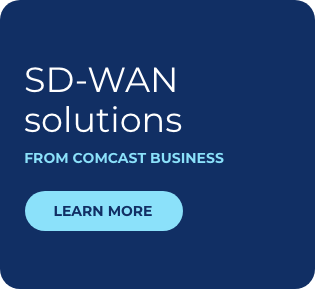Digital Transformation: The Importance of Employee Experience to a Digitization Strategy

If approached correctly, digital transformation should touch just about every aspect of the enterprise. And one area that deserves careful consideration and execution when carrying out digital transformation strategies is employee experience.
While ultimately the goal of digital transformation is to create an agile organization with finely honed processes that responds promptly to customer wishes and preferences, the road to transformation is much bumpier without buy-in from the employees who are tasked with carrying out the strategy. Success may well depend on how you address the needs of your workforce in your overall plan.
Delivering the best possible employee experience requires addressing three primary factors – tools, access and processes. The point is to give employees easy access to the information they need to do their jobs when and wherever they need it. In this way, you create the conditions for workers to unleash their full creative potential and collaborate freely on new ideas, market plans, products and services. Digital transformation provides a tangible opportunity to foster an innovative, productive environment for employees to help a business perform at its best.
Consumerization of IT
To understand the importance of employee experience in digitization efforts, it helps to go back to the days of Web 2.0, when user-generated content and social media started to fundamentally change the internet from just another medium that delivers static information.
Web 2.0 smoothed the path for transformative developments such as the cloud and mobility. The result was a consumerization of IT that created savvier, more demanding technology consumers. Home access to tools such as smartphones and highly functional web applications had the effect of pressuring businesses to implement technology at least as advanced as what employees had at home. This led to practices such as BYOD (bring your own device) and internal app stores that shift much of the traditional power of IT to the hands of users.
Now as organizations try to figure out how to balance user demands with issues of data control and security, they are having to contend with new pressures. New developments such as data analytics and the Internet of Things (IoT), are forcing companies to evaluate their digitization strategies as they seek to create an ecosystem of traditionally separate digital systems to work in unison to optimize efficiency and customer service. Productivity is key here, but it doesn’t happen in a vacuum. Organizations must take care to address the employee experience.
Immediate Access
Immediate access to information promotes productivity. Companies need to not only invest in connectivity and bandwidth to facilitate access, but also provide the resources that facilitate employee productivity and business agility. These are fundamental to a digitization strategy.
WiFi in cafeterias and corporate gyms, for instance, allow employees to stay connected to enterprise applications and databases even when they leave their desks. For employees and executives working at home or in remote locations, reliable connectivity is an imperative.
This may require investment in private connections between homes, branches and headquarters to ensure everyone has the same level of access and connectivity. T1 and TDM connections are unlikely to handle the multipoint, hub-and-spoke-and-other-spoke linkage distributed networks increasingly will require. Instead, enterprises should consider investing in fiber and Carrier Ethernet for highly available and secure connections.
The other essential component of real-time access consists of self-service tools that unshackle employees from IT policies that cause delays and interruptions. Internal app stores and self-service mobile apps give employees ready access to new technology, as well as updates and upgrades, without waiting for IT to install it on their devices. When moving around their office buildings or while in the field, employees also can take advantage of smartphone apps that connect to business systems, putting information at their fingertips when they need it.
Collaborative Mindset
When guided by the maxim that a happy employee is a better employee, organizations are more likely to make good decisions on what technology to place in the hands of workers. This requires an understanding of well-defined objectives such as collaboration and innovation, which are achievable by making available the tools and access to systems that workers need.
For instance, companies ought to deploy collaboration systems that allow employees from different locations to work on projects in real time, sharing ideas and contributions as the work progresses. A content management system (CMS) application supports good planning and organization by providing a central location for text documents, videos, images, calendars and dashboards for information intended for publication, be it internally, publicly or both.
Business intelligence (BI) and analytics systems also are becoming more and more relevant as organizations strive to make sense of the data they collect and put it to good use. BI systems are packed with functionality geared to organizing and analyzing data from multiple sources to make it meaningful and relevant to the users who work with it.
Increasingly, BI and analytics systems feature dashboards and visualization tools that convert data from abstractions to easily digestible information through graphs, maps and infographics. For instance, monthly reports with heat maps and graphics pinpointing regions where a certain product is most popular can help a company fine-tune its production and supply line with an eye toward improving the bottom line.
Process Automation
Hand in hand with self-service tools is process automation. Any business process than can be programmed to run on its own is always preferable to using time and human resources to handle it. So enterprises shouldn’t ignore any opportunity to automate the capture, routing and organization of information.
The less time employees have to spend on routine tasks, the more they can dedicate to innovation and collaboration. And that’s what digital transformation ultimately is about – leveraging digital capabilities as efficiently as possible so that organizations can maximize their most important asset – their workforce.
Digital transformation is about leveraging capabilities as efficiently as possible to help organizations maximize their most important asset: their workforce.
Locked Content
Click on the button below to get access
Unlock NowOr sign in to access all content on Comcast Business Community
Learn how Comcast Business can help
keep you ready for what's next.











